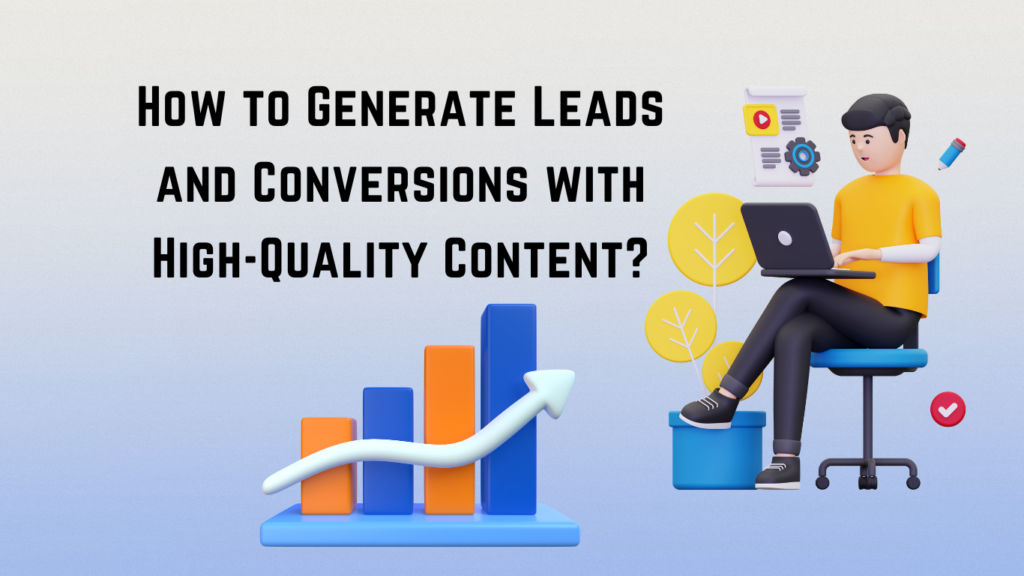
The fundamental objective of content marketing is to create and share valuable material with your target audience. When done correctly, it’s one of the most effective business expansion strategies. A strong content marketing strategy is necessary for success. We will help you through the process of making one in this guide.
What Is a Content Marketing Strategy?
A content marketing strategy is a plan that focuses on creating, publishing, and distributing valuable, relevant, and consistent content to attract and retain a clearly defined audience. The ultimate goal is to drive profitable customer action.
- Set Clear Goals: Define what you want to accomplish—increasing brand awareness, generating leads, or driving sales.
- Understand Your Audience: Dive deep into your audience’s preferences, pain points, and needs. This helps in creating content that truly engages and adds value.
- Content Creation: Develop high-quality, informative, and engaging content. This can range from blog posts and videos to infographics and social media updates. The key is to ensure the content is relevant and useful.
- Distribution Channels: Plan where you’ll share your content. It could be on your website, social media platforms, email newsletters, or other online channels. The aim is to reach your audience where they are most active.
- SEO Optimization: Make sure your content is optimized for search engines. This increases visibility and attracts organic traffic. Use relevant keywords, meta descriptions, and internal links.
- Content Calendar: Schedule your content consistently. A well-organized content calendar helps maintain a steady flow of content and keeps your audience engaged.
Set Clear Goals
Before diving into content creation, it’s crucial to establish clear and measurable goals.
- Brand Awareness: If you’re a new brand, your primary goal might be to increase brand visibility and recognition.
- Lead Generation: For businesses seeking to expand their customer base, generating leads is a key objective.
- Sales and Revenue: Ultimately, most businesses aim to drive sales and increase revenue through content marketing.
Understand Your Audience
In the realm of business, understanding your audience is not just beneficial—it’s crucial. To create content that truly engages and adds value, you need to delve deep into your audience’s preferences, pain points, and needs. Here’s how to achieve this:
To create content that resonates with your audience, start by conducting thorough research, analyzing data, and developing detailed buyer personas.
This involves gathering insights from surveys, social media, and customer interactions to understand your audience’s preferences and pain points. By analyzing this data, you can create comprehensive buyer personas that guide your content strategy, ensuring it is tailored to meet the specific needs and interests of different audience segments.
Engage with your audience directly through social media interactions, live Q&A sessions, and community forums to gather real-time feedback.
Use these insights to inform your content creation, focusing on addressing the specific challenges and needs of your audience.
Content Creation
Creating high-quality content that resonates with your audience is essential for an effective content marketing strategy. Start by developing a content plan that outlines the types of content you will produce, such as blog posts, videos, infographics, podcasts, or social media updates.
Ensure these formats align with the preferences of your audience, as determined by your research. Select topics that address specific pain points, interests, and needs of your audience, using your buyer personas to guide your topic selection. This ensures relevance and engagement.
Here’s how to make this happen:
- Develop a Content Plan: Outline the types of content you’ll create (blog posts, videos, infographics) and select topics that address audience pain points and interests.
- Create High-Quality Content: Ensure your content is informative, engaging, and visually appealing.
- SEO Optimization: Use relevant keywords, write compelling meta descriptions, and incorporate internal and external links to enhance search engine visibility.
- Tailor Content to Platforms: Adapt your content to fit the style and format of each platform (website, social media, email).
- Use Visual and Interactive Elements: Include images, videos, infographics, and interactive content to enhance engagement.
- Monitor and Adjust: Regularly analyze content performance using analytics tools and refine your strategy based on feedback and performance data.
Distribution Channels
The internet is a vast ocean of information, with new content being added every second. This presents both a challenge and an opportunity for businesses. While it’s easier than ever to reach a global audience, it’s also harder to stand out.
To ensure your content cuts through the noise, effective content distribution is essential.
By strategically sharing your content across multiple channels, you can maximize its visibility and impact.
What is Content Distribution?
Content distribution is the strategic process of promoting and disseminating content to reach a target audience. It’s an essential part of the content marketing strategy that ensures your high-quality content gets seen and engaged with. Here’s a brief overview:
1. Owned Channels: These are platforms you control, such as your website, blog, and email newsletters. Distributing content on owned channels allows you to maintain full control over how your content is presented and engaged.
2. Earned Channels: These include platforms where your content is shared organically by others, such as social media shares, mentions, and backlinks from other websites. Earned channels boost your content’s credibility and reach through word-of-mouth and third-party endorsements.
3. Paid Channels: These involve paid promotion to amplify your content’s reach. Examples include social media ads, pay-per-click (PPC) campaigns, and sponsored content. Paid channels can effectively target specific audience segments to drive traffic and engagement.
SEO Optimization
Search engine optimization (SEO) is the process of improving a website’s visibility and traffic from search engines. The goal of SEO is to help search engines understand a website’s content and help users find it.
Here are some things to consider when optimizing a website for SEO:
- Content elements
Optimize for content elements like title tags, meta descriptions, header tags, image alt text, and open graph metadata. - Local searches
Create a Google Business Profile and optimize it for local searches. Also, include localized content on the website. - Search Essentials
Follow the Search Essentials to make a website more eligible to appear in Google’s search results.
SEO can be beneficial for marketers and businesses. It can help: Improve a website’s visibility, Attract more organic traffic, Generate more leads, and Boost brand awareness.
Some people hire an SEO to improve their website, but this can be risky. It’s important to research the potential advantages and disadvantages before hiring an SEO.
Content Calendar
A content calendar, also known as an editorial calendar, is a schedule that helps content creators plan, organize, and track their content. It can be used to plan social media posts, including the content, publication time, and platform. Content calendars can also be used to track the progress of content creation, identify gaps, and measure performance.
Here are some benefits of using a content calendar:
- Stay organized:
Content calendars help creators stay on top of their content across multiple platforms. - Coordinate efforts:
Content calendars can help creators coordinate with cross-functional teams. - Post at the right time:
Content calendars help ensure that content is published at the right time and place. - Analyze performance:
Content calendars help creators analyze which content performed best and adjust their strategy. - Plan for events:
Content calendars can help creators plan for holidays, events, and observance days.
Conclusion:
The strategic process of producing high-quality content that generates leads and conversions calls for a thorough comprehension of your target audience, regular production of worthwhile and captivating material, and efficient distribution. You may customize your content to your audience’s unique requirements and preferences by establishing clear objectives, carrying out in-depth research, and creating comprehensive buyer personas. Its reach and visibility will be expanded by producing a wide variety of excellent material and optimizing it for search engines.
In addition, utilizing a combination of owned, earned, and paid distribution channels guarantees that the appropriate individuals will view your content at the appropriate moment. Frequent evaluation and assessment of your content’s performance aids in strategy refinement, allowing you to make ongoing adjustments based on feedback and data.



